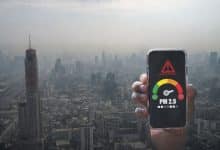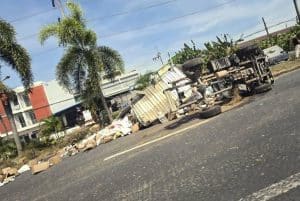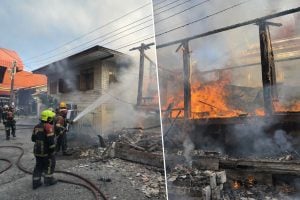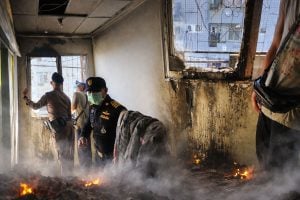Chiang Mai battles with deteriorating air quality due to wildfires

Chiang Mai is currently grappling with deteriorating air quality caused by a surge in wildfires throughout the region. This concerning situation has positioned the province among cities with the most compromised air quality worldwide, as it contends with dense smog enveloping its downtown area daily for the past month.
In a recent report by the Wildfire and Pollution Control Command Centre, an additional 52 hotspots were identified yesterday in Chiang Mai, augmenting the 166 hotspots previously detected by the Geo-Informatics and Space Technology Agency (GISTADA) on the previous day.
Totalling 218 hotspots, these findings are particularly worrisome despite reports of a decrease in incendiary activities within the province.
Six air quality monitoring stations positioned in various districts within the province have recorded unhealthy levels of ultra-fine particulate matter, known as PM2.5.
These stations, three in the Mueang district and one each in Chiang Dao, Hot and Mae Chaem districts, recorded PM2.5 readings varying between 53.3 and 102.7 microgrammes per cubic metre (μg/m³).
The healthy threshold for 24-hour exposure to PM2.5 is 37.5 μg/m³, thus rendering any higher readings as unhealthy.
The air quality monitoring website, IQAir.com, reported that Chiang Mai’s air quality index hit 161 and its PM2.5 level reached 74.1 μg/m³ at 10am yesterday. This alarming figure classifies the city as the world’s fourth most polluted city.
According to the website’s data, Chiang Mai has consistently featured on the list of the world’s most polluted cities from April 1 to 29 this year, reported by Bangkok Post.
In response to the current crisis, Chiang Mai’s governor, Nirat Phongsitthithawon, reassured the public that authorities are doing everything within their power to contain the wildfires.
Nirat urged all relevant agencies to implement anti-pollution measures to combat the fine dust pollution that poses a significant risk to public health and the local tourism industry.
In related news, as of April 14, only three provinces in northern and northeastern Thailand experienced seriously harmful levels of PM2.5 pollution, while the majority of the country enjoyed good air quality.
Latest Thailand News
Follow The Thaiger on Google News:


























